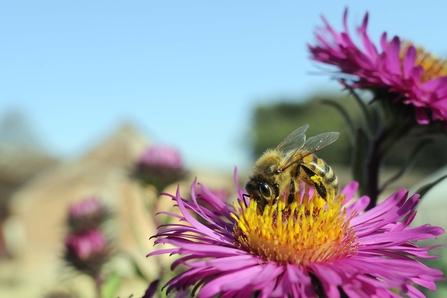Neonicotinoids are a class of neuro-active insecticides chemically similar to nicotine [1]. Experts have revealed that neonicotinoid chemicals do have a harmful effect on insect pollinators, including honeybees and bumblebees [2]. Scientists have recorded this impact across the natural world: in the soil, vegetation, freshwater and the sea. This has serious consequences for processes we humans rely on to survive, such as pollination.
The Wildlife Trusts believe that the continued use of these chemicals in the UK would represent a huge risk to insect pollinator populations and the health of the natural world. Pollination is vital to maintain a huge range of plant and animal life and to ensure we have a good supply of crops to eat. Many scientists believe that loss of pollinators would cost the UK economy around £1.8 billion per year [3] and would be a disaster for the environment [4].


